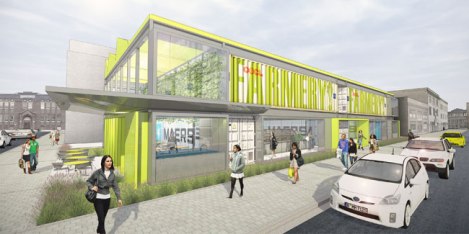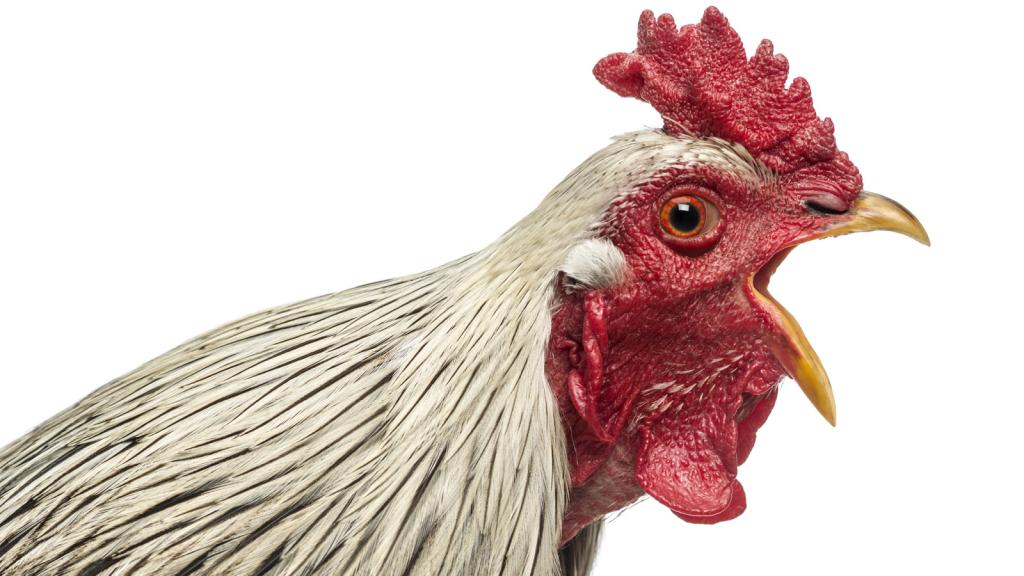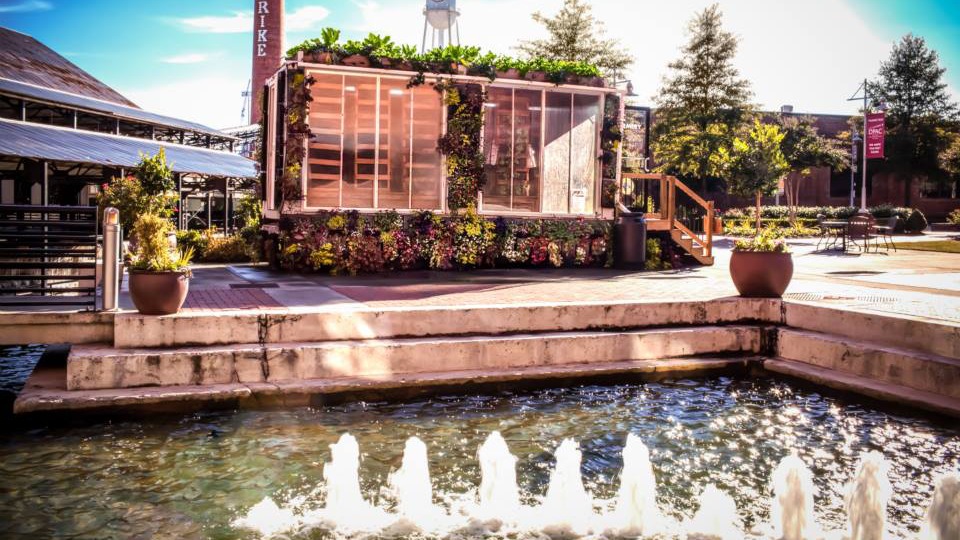Three days a week in downtown Raleigh, N.C., fans of fresh fruits and veggies can pick up their local tomatoes, cucumbers, strawberries, potatoes, squash, and blackberries inside a 200-square-foot shipping container. The unconventional farm stand is no rigged-together gimmick. It’s actually the first prototype of something called the Farmery, a combined grocery store and urban farm where grocery shoppers not only get a glimpse of how their food is grown, but also get to harvest some of their own ingredients; herbs and other leafy vegetables are grown on the inside walls and the roof.
“The Farmery is really a model to make the first locally sourced grocery store,” says Ben Greene, the project’s founder and one of a team of eight people attempting to reimagine what eating healthy means for city neighborhoods.
 Greene calls the shipping container prototype, which sits on the grounds of the downtown Raleigh City Farm, the Mini-Farmery. Greenhouse windows line much of the 8-by-20-foot structure. Hanging on one wall are panels where greens are grown on-site. Shelving on the opposite side holds food grown at local farms, including the urban farm in which it sits.
Greene calls the shipping container prototype, which sits on the grounds of the downtown Raleigh City Farm, the Mini-Farmery. Greenhouse windows line much of the 8-by-20-foot structure. Hanging on one wall are panels where greens are grown on-site. Shelving on the opposite side holds food grown at local farms, including the urban farm in which it sits.
In the 8,000-square-foot, scaled-up version, Greene imagines an open bottom floor that would hold the main grocery and a café for selling drinks and deli meats. Above that, eight shipping containers supported by beams and equipped with side panels for growing herbs and greens, nourished by what Greene calls the “Living River Growing System” — a raceway tank that looks and acts like a stream, filtering and channeling nutrient-filled water to the seven-foot-high growing panels. On top of all this would sit a greenhouse roof.

That’s the dream. Challenges, however, remain. For starters, there’s the price tag: Greene estimates he’ll need between $2 and $3 million to cover construction and operating costs and equipment such as refrigerators, the Living River Growing Systems, and the shipping containers.
And there are some wrinkles to iron out with those systems. While some food is grown within the Mini-Farmery, Chris Rumbley, CEO of Raleigh City Farm, says the shipping container presents some problems. “We haven’t operated the growing systems in it very much, partly because it’s been winter, and the system itself has not been optimized for the winter,” he says. “The unit drops down to below 30 degrees inside during the cold weather too, so interior growing is dismal in the winter.” Rumbley also has concerns about the relative safety of the food that would be grown inside such a structure.*
Still, Rumbley says, the shipping-container model holds promise the way it is being employed now: as a temporary farm stand, which acts as a hub for local farmers to sell their products and attracts foot traffic in a bustling downtown area. The compact size of the structure could also offer a new way to bring fresher produce to neighborhoods classified as food deserts, where low-income folks live and where big-box grocery stores are least likely to be found, according to a 2013 report from the Food Trust.
The full-scale growing system Greene is proposing for the full-scale Farmery is actually disconnected and sitting on a farm in Clayton, N.C. It’s taken about four years, he says, to get it up and working. Still, he’s confident that he can scale up, and hopes to have a developer begin construction on the first official Farmery somewhere in the U.S. this fall for a spring 2015 opening. (Some members of the Farmery founding team just finished up at a San Francisco-based accelerator for “urban innovators.”)
Once construction is complete, financial sustainability appears to rely heavily on local farmers. “Most of [the business’s] margins are made in the café and on the crops that we grow on site,” Greene says. “Everything else comes from crops from local producers.”
Ultimately, Greene and his team want to build these Farmery stores in cities across the U.S.: Charlotte, Richmond, Raleigh, Winston-Salem, and possibly a city in the San Francisco Bay Area.
Do that, Greene says, and the Farmery will be the first in “the next wave of natural grocers.”
* CLARIFICATION: Rumbley’s concern about food safety inside the Farmery was a theoretical question about food contamination and spreading disease. Who’s to say, for instance, that someone with the flu doesn’t show up and sneeze on the fresh kale while harvesting a little for herself? Greene’s response: “What’s the difference between that and a grocery store?” He adds that the food at the Farmery is “potentially more safe” because it is fresher. “In the Farmery, the food is still alive,” he says. “The food that’s in the grocery store is decaying in front of your eyes.” (We should note, however, that just because food is still growing doesn’t mean it’s completely safe from foodborne illnesses.)


